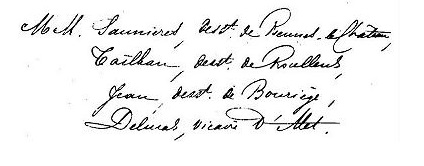|
Last Updated 15 January 2023  The Origins of The Myth Preliminary Note: The historically factual account of Bérenger Saunière, about a priest who lost his position in 1911 because he accepted more money than he was able to say Masses for, was transformed into a Myth by the 1950s when the charlatans came knocking on the door: sudden accounts of “how workmen renovating the church in Rennes-le-Château discovered something making the priest rich overnight” appeared out of nowhere (not dating from the priest’s lifetime). The earliest claims by Noël Corbu and Robert Charroux were quickly elaborated upon by Pierre Plantard, Philippe de Chérisey and Gérard de Sède to promote the mythical history of the Priory of Sion, also only dating from the early 1960s. Today, new myths replace the original myths without any sign of this trend abating, with Marie-France Etchegoin and Frédéric Lenoir observing: “The story of Rennes-le-Château functions as a powerful catalyst, attracting all the mysteries, all the speculations – as well as all the deceptions that swarm in the esoteric nebula. We have before us the creation of a contemporary myth” (Code Da Vinci: L’Enquête, Éditions Robert Laffont, Paris, 2004) 1 June: Abbé François-Bérenger Saunière appointed parish priest of Rennes-le-Château, replacing Antoine Croc The Abbé Bérenger Saunière delivered a political sermon from his pulpit by reading one of the articles from the local religious paper, La Semaine Religieuse de Carcassonne (which ran a series of articles about those elections in its issues, aimed at the ‘enemies of the Church’, dated 13 September, 27 September, 4 October, 11 October, and 18 October 1885) It is not known which of the above articles Saunière read from his pulpit, but it could have been the one dated 11 October that contained the following passages: “The victory is not yet complete. The ballot poll, fixed at Sunday October 18, must ensure our triumph or deliver us yet to the keen enemies of the Religion and Fatherland. The moment is thus solemn and it is necessary to employ all our forces against our adversaries. That is our great concern.... Yes, let us act, pray, amend ourselves, make penitence; and perhaps we will obtain that this day of October 18, becomes for us a day of delivery” Saunière would have asked his parishioners to vote for the ‘Union of the Right’, dedicated to the reversal of the anticlerical legislations of the Republican Government and towards the restoration of the French Monarchy – this Party was comprised of a coalition of the Conservatives, the Bonapartists and the Monarchists – with the Monarchists being the most successful part of the coalition during the 1885 elections winning the most Seats It was this success by the Monarchists within the ‘Union of the Right’ coalition, by gaining so many extra Seats, that forced the Republic into introducing the Law of Exile in 1886 banishing all the French Royal Heads from France [*On 8th February 1884 there appeared the Papal Encyclical of Leo XIII, ‘Nobilissima Gallorum Gens’ (‘To the Most Noble French Nation’, On the Religious Question in France) – addressed to the Cardinals, Archbishops and Bishops of France – mentioning that France was alienating itself from its past Catholic Traditions and that it had to do all it could to restore those values] 30 October: Mgr Billard receives a complaint from the Minister of Religion relating to the ‘reprehensible behaviour’ of four clerics during the electoral period of 1885 and asking for their transfers 15 November: Mgr Billard responded by stating that Saunière had no intention of attacking the Government, but had the right as the Defender of Religion to read an article from La Semaine Religieuse de Carcassonne, “to give advice to the voters of his parish in the presence of anti-Christian anti-Concordat programmes of several candidates of the deputation” 2 December: René Goblet, the Minister of Religion, wrote to Mgr Billard stating that he had suspended four priests in the Rennes-le-Château region: B. Saunière, curate at Rennes-le-Château 13 December: Article in La Semaine Religieuse de Carcassonne, criticises the suspension of the four priests by the Minister of Religion, commenting: “To the long list of priests who have been victims of a systematic persecution have been added, since the last electoral period, the names of four priests from the local diocese: Jean, Tailhan, Delmas and Saunière. The Prefet of the Aude notified them of the Ministerial decision depriving them of their stipends with effect from 1 December 1885. In vain their Bishop sought to defend them against the allegations by providing the Minister of Public Worship with a firm but dignified explanation of their conduct. He had the misfortune to see the Minister take no notice at all of it. The informers have triumphed. Can they not comprehend the seriousness of their error, given the consequences that will inevitably unfold in their parishes...” Republicans 383 seats; ‘Union of Right’ 201 seats (Royalists 73 seats; Bonapartists 65 seats; Conservatives 63 seats)
January: Abbé Bérenger Saunière temporarily transferred to the Seminary of Narbonne for delivering anti-Republican, right-wing sermons during the elections 22 June: Republican Government confirmed the Law of Exile, whereby Heads of the French Royal Houses had to depart from French soil (repealed by the Act of 24 June 1950)
The Royalist politician, Baron de Mackau, instrumental in forming the alliance between French Royalists and General Georges Boulanger, becoming a most important intermediary between the two forces. Royalists hoped to use Boulanger as a ‘battering ram’ to topple the Republic. Boulanger was also backed by Radical politicians hoping to make him into the standard-bearer of constitutional revision in order to create a more democratic Republic 5 June: Parish Council Re-Floors the Church of Rennes-le-Château, work undertaken by Saunière Lapolisette 1 July: Bérenger Saunière reinstated at Rennes-le-Château
27 July: New Altar (F. D. Monna, Toulouse) donated by Mme Marie Cavailhé, fulfilling a vow she made during a serious illness when living in Rennes-le-Château – a staunch Monarchist belonging to one of the richest families in the department, who in 1874 had published a book of Royalist Poems entitled Fleurs-de-Lys (first poem dedicated to the Comte de Chambord). Bérenger Saunière installed new stained-glass windows (Henri Feur, Bordeaux) in his church costing 1,350 francs – a bill that was paid for in instalments on 30 September 1887, 12 April 1897, 26 April 1899 and 7 January 1900. The beginning of Saunière’s church renovations that were to last for a period of 10 years 14 September: 25th Anniversary of the Coronation of the Miraculous Statue of Notre Dame de Marceille (the Countess of Chambord donated a Byzantine Icon to the church in 1863, placed in a niche by the Miraculous Statue – this is probably what gave Bérenger Saunière the idea that he received a gift from the Countess of Chambord later during his 1910-1911 ecclesiastical Trial when he was concocting his “List of Donors”, since this “donation” is not recorded in his Account books)
Republicans 366 seats; Right 210 seats (Royalists 86 seats; Boulangists 72 seats; Bonapartists 52 seats) 27 January: General Georges Boulanger elected in Paris – seeking to gain the Catholic vote, offering religious peace and stability within a Republican framework. (“The clergy intervened more openly in the elections than in previous ones, taking a stand against the Republicans, who had just passed the law establishing 3 years military service and obliging seminarists, like students and future members of the teaching profession, to serve for a year. The military law and the educational laws were from then on the Catholics’ great subject of protest” – J-M Mayeur & M Reberioux, The Third Republic From Its Origins To The Great War, 1871-1914; Cambridge University Press, 1977) 17 March: General Boulanger’s speech in Tours (written by Naquet): “No one among the conservatives who follows me does me the insult of saying that I support the Republic in order to betray it” General Boulanger later fled to Belgium following threats of arrest for plotting to overthrow the state – he was tried in abstentia by the Senate sitting at a high court and was condemned to life imprisonment
1 July: On an Episcopal visit to Rennes-le-Château, to celebrate the Rite of Confirmation for the children, Mgr Billard congratulated Saunière on everything he had done, consoling him, and encouraging him, in spite of all the difficulties that he had encountered, to try and continue his pastoral ministry
4 May 1890 – 12 June 1891: Bérenger Saunière also serves as parish priest at the village church of St Andrew in Antugnac, situated some seven miles away from Rennes-le-Château – his surviving sermons during his Ministry there were published in 1984 (edited by the Abbé Bruno de Monts)
15 February: Municipal Council approved Saunière's request to fit out, at his own expense, a square by the church and cemetery, as long he did not construct any roofed building and that a key allowing access was deposited in the Town Hall. Saunière eventually constructed a small building above a water cistern on the site and when the local council did not object, moved his library and office there. Saunière planned to turn the building into a chapel in 1898. 
The Dénarnaud family move into the village Presbytery, including an orphan Julie Maleville (1879-1957) – the foster sister of Marie Dénarnaud Monsignor Billard, Bishop of Carcassonne, inherits 1,200,000 Francs from the widow Madame Rose Denise Marguerite Victorine Sabatier of Coursan – not in his capacity as Bishop, but in his own private person (the Bishop was an active anti-Republican) Formation of ‘Union of Christian France’: ‘Co-operation of Christians and all respectable people, whatever their political opinions, to defend and demand unanimously civil, social and religious liberties’ 2 March: Archbishop of Paris denounced anti-Christian sects who wanted to make ‘a series of anti-religious laws the essential constitution of the Republic’ Pope Leo XIII sanctioned a local Feast of the apparition of Our Lady of Lourdes, authorising a proper Office and Mass Ceremony 21 June 1891: Statue of Our Lady of Lourdes and the ‘Visigothic’ Pillar installed by Bérenger Saunière at Rennes-le-Château, in the presence of a Lazarist priest from the church of Notre-Dame de Marceille (Lourdes was considered the symbol of the restoration of the Bourbon Monarchy by Père Emmanuel d’Alzon [1810-1880], the founder of the Assumptionist Order) It is commonly believed that the ‘Visigothic’ Pillar dates from at least the Carolingian period, and that it was originally one of two pillars that supported the old church altar. The earliest reference dates from 1906 in an article by Elie Tisseyre, who wrote: “We also noted in another little garden a stone pedestal supporting a Virgin. The pedestal was very old and beautifully worked but had been restored in order to deepen the relief work and in so doing the workman had robbed it of all artistic merit.” The next reference appeared in an article by Antoine Fagès in 1909, who wrote: “to the left of the door of the church, serving as a base for the Virgin of Lourdes, is a pillar which formerly supported the high-altar. According to Abbé Saunières [sic] the high-altar was composed of a large flagstone set into the wall on one side and supported in front by two pillars, one of them coarse and the other just referred to, which appeared to us to date from the same period as the tombstone (‘La Dalle des Chevaliers’).” 19 July: In Toulouse, Comte d’Haussonville, representative of the Comte de Paris, expressed the view that it was ‘extremely probable’ that at the next elections the candidates of the monarchist committees would identify themselves with those of the committees of the ‘Union of Christian France’ 23 July: Pope Leo XIII confirmed the local Feast of the Apparition of Our Lady of Lourdes, authorising a proper Office and Mass (the Sacred Congregation of Rites had previously granted the diocese of Tarbes of celebrating this Feast on 11 July, 1890). July, November: Bérenger Saunière borrowed two amounts of 250 francs from Madame Marre Barthélémy (Saunière had ‘Secret Funds’ representing 80 francs for the whole year) 21 September: From Bérenger Saunière’s Notebook, “letter received from Granes, discovery of a tomb, rain in the evening” 29 September: From Bérenger Saunière’s Notebook, “Saw the curé of Névian – Went to see Gélis – Went to see Carrière, Saw Cros and secret” (“secret” an abbreviation for secrétaire – “Cros” being Abbé Guillaume Cros, 1810-1898, the Vicaire général, with Pierre Pradel the Secrétaire général) 30 September: General Georges Boulanger died – Saunière noted in his journal, “Mort de Boulanger”
16 February: Pope Leo XIII calls to French Catholics to rally in support of the Republic in his Encyclical Au milieu des sollicitudes – putting to an end the solidarity between the Church and the Monarchists (‘Union of Catholic France’ was dissolved soon afterwards) From La Croix: “Let us attack these unfortunate laws and let us urge all Catholics – royalists, Bonapartists, republicans – to unite their efforts in order to try loyally establish a Christian Republic in France” La Croix accepted the Tricolor but only on condition that the white part bore a picture of the Sacred Heart, the sign of the consecration of the Republic to Christ. – J-M Mayeur & M Reberioux, The Third Republic From Its Origins To The Great War, 1871-1914 (Cambridge University Press; 1977)
Republicans 488 seats; Right 93 seats (Monarchists 58 seats; ‘ralliès’ 35 seats). Decree of 27 March: Vestry-committee (Conseil de Fabrique) Accounts were made subject to General Public Accounting Rules – something Bérenger Saunière regarded as another attack on the freedom of the Church 5 September: On this date Bérenger Saunière stopped completing once and for all the column devoted to those masses which he had actually said (his comment “I stopped there”) in the notebook in which he recorded the mass-intentions that people had sent to him. At that time he accumulated, almost eight months late, the last masses which he had said, and for which he had been receiving payment since 9 January. From this date begins Saunière’s fraudulent trafficking in masses activities that were to last until the end of his life Church of the Blessed Virgin Mary at Notre-Dame de Marceille purchased by Monsignor Billard, the Bishop of Carcassonne. Jean Moulines, Mayor of Rennes-le-Château, 1893-1893 Pierre Sauzede, Mayor of Rennes-le-Château 1893-1900
October: Bérenger Saunière began renovating the church cemetery Philippe VIII, becomes the Orleanist Pretender to the French Throne The National Pilgrimage to Lourdes was an overtly anti-Republican protest
12 and 14 March: Inhabitants of the village sent two letters of complaint to the Préfet de l’Aude about Saunière’s work in the cemetery without making any reference to the desecration of graves or to the destruction of epitaphs on gravestones 20 July: Sanctions imposed against Saunière by the local Parish Council for his refusal to assist in putting out a fire in the village on 14 July – Bastille Day (the Fête Nationale introduced in 1880)
The newsletter Mont-Segur (1896-1899 and 1901-1904), celebrating the achievements of the Cathars and denouncing the Crusade, and written entirely in Occitan, established in Rennes-le-Château by banker Arthur Cassou and Prosper Estieu (1860-1939) – composer of Occitan Poetry, village schoolmaster in Rennes-le-Château from October 1899, and member of The Gnostic Catholic Church shortly before 1900, through which he got to know Déodat Roché (1877-1978) March: First of several financial gifts by Abbé Henri Boudet (1837-1915) to Bérenger Saunière, other financial gifts dating from March 1896, March and October 1897, January and November 1898, March 1899 and March 1900 – amounting to a maximum total of 290 francs 7 July: Letter to Bérenger Saunière from Georges Castex about the renovations of the church of St Mary Magdalene, costing 2,400 francs Bérenger Saunière’s selling of masses activities takes-off on a Grand Scale – becoming noticed by his superiors at the Carcassonne Bishopric. Saunière advertised mass requests in religious magazines, journals and papers around the world, and the responses just poured in on a massive scale – the priest had cashed-in on a religious activity during the height of the conflict between Church and State in France 1885-1905. Saunière’s mass requests appeared in Advertisement Supplements in magazines and journals that were either commonly discarded as rubbish or used for starting fires in the old-fashioned fireplaces, hence the reason why none of the mass requests have survived 13 October: Report by the Préfet de l’Aude indicated that Alfred Saunière had been a prêtre libre (Free Priest) – a priest without a Parish – for about three years. The Report also stated “Monsieur Alfred Saunière is hostile to the Government and to the Republic.” (Alfred Saunière had been lecturer at the Petit Séminaire in Narbonne 1880-1892, and had also been the editor-in-chief of the journal La Croix du Sud) 20 November: Bérenger Saunière signs a contract with Bernard Giscard of Toulouse (1851-1926) to supply Statues of the Saints, the Stations of the Cross, the ornate Baptismal Font, the Holy-Water Stoup, and a Bas-Relief of Jesus Christ on the Mount above the Confessional to decorate the church (the statue of the Devil that holds-up the Holy Water Stoup, ordered a little later and specially made for Saunière by Giscard, had a head that strongly resembled the head of the Dragon slain by St Michael, also offered in Giscard’s Catalogue) The Baptismal Font depicted the Baptism of Christ, symbolising the restoration of the French Monarchy; whilst the Holy Water Stoup was decorated with the figure of the Devil, symbolising the vanquishing of the French Republic. The imagery was obviously regarded as a preliminary to the forthcoming 1898 French General Election 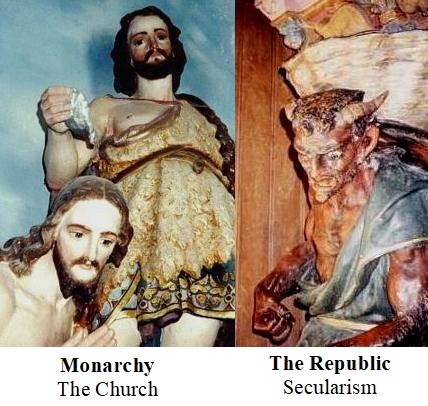
6 February: Charles Dénarnaud of Alet-les-Bains installed the Calvary in the centre of the garden next to the church entrance, strategically facing the ‘Visigothic’ pillar and statue of Our Lady of Lourdes. The Calvary bears the inscriptions Christus Vincit, Christus Regnat, Christus Imperat, Christus AOMPS Defendit (Christus ab omni malo plebem suam defendat) A flagstone commonly called ‘La Dalle des Chevaliers’ was originally placed on the steps of The Calvary 6 June: Saunière’s church re-consecrated on the Feast Day of Pentecost by Monsignor Billard, the Bishop of Carcassonne in the company of R. P. Mercier, a Lazarist priest from the Church of Notre Dame de Marceille Bérenger Saunière was to write to Monsieur Giscard, the supplier of the additions to his Church:
“Dear Monsieur Giscard,
Republicans 489 seats; Right 96 seats (Monarchists 44 seats; ‘ralliés’ 32 seats; Nationalists 6 seats; Révisionists 4 seats; Diverse 10 seats) Bérenger Saunière purchases several plots of land in the name of Marie Dénarnaud that would become the site of his future estate (on 22 October, 27 April, 20 July, 16 August) Monsignor Billard, Bishop of Carcassonne, struck down with paralysis – having also been suspended from his post for “having administered the assets of his diocese in the most irregular fashion and for having contracted staggering debts, which were completely unjustified” (Simon Laborde, Biographical notice on Monsignor Billard, late Bishop of Carcassonne, 1902)
Bérenger Saunière builds his Estate:
March: Annuaire du clergé français (a clergymen’s directory) obtained by Bérenger Saunière from Alfred Mame & Son of Tours – using it to solicit Mass Requests from priests all over France, following the numerical order of the French départements 25 May: Pope Leo XIII consecrates the whole human race to the Sacred Heart of Jesus in his Encyclical Annum Sacrum 31 May: Bérenger Saunière submitted a petition against the obligation imposed upon him to submit the Vestry-committee (Conseil de Fabrique) Accounts for inspection, to Étienne Dujardin-Beaumetz (1852-1913), President of the Radical Left Parliamentary Group, and his Parliamentary Representative 2 October: Prefect of the Aude entrusted the Sub-Prefect of Limoux to conduct an official investigation into Bérenger Saunière following his name being put forward by Mgr Billard for promotion as personnat [a benefice in a cathedral that took precedence over the canons]. On 16 October the Sub-Prefect of Limoux replied to the Prefect of the Aude: “Monsieur Saunière is comfortably off. He has no family responsibilities. His conduct is good. He professes anti-government views. Attitude: militant reactionary. Negative recommendation.” Abbé Saunière did not receive his promotion 8 October: Article in Echo de Narbonne presented Alfred Saunière as a major player in local conservative politics
Summer: Bérenger Saunière drew some water from the village water-tank to water his garden with and, in doing so, deprived the village school, where Prosper Estieu was living, of its entire water supply. Estieu in response successfully obtained permission from the Sub-Prefect in Limoux for the school to obtain a separate water supply 13 June: Sub-Prefect of Limoux writes to Prefect of the Aude as follows “The present village council is devoted to its curé. In fact the council it is not far off entering into a war against the village school-master, so as to be able to clandestinely grant Saunière the various advantages that it seems determined to deny to Estieu” 2 August: Prosper Estieu meets Déodat Roché in Rennes-le-Château Pierre Rouge, Mayor of Rennes-le-Château 1900-1902
1 March: Monsignor Billard bans Bérenger Saunière from soliciting for mass-requests from anywhere, an injunction repeated on 16 May 1 July: Law Of Associations introduced by the French Government according to which no religious congregations could be formed without authorisation from the State. Congregations had to submit an annual list of members, property, and financial status that had to be submitted to the Government authorities on request
Republicans 465 seats; Right 124 seats (Conservatives 89 seats; Liberals 35 seats) 13 May: Monsignor Paul-Félix Beuvain de Beauséjour (1839-1930) replaces Monsignor Paul-Félix-Arséne Billard as the Bishop of Carcassonne, confirmed on 20 March 1904 22 July: Inhabitants of Rennes-le-Château submitted a formal complaint about Prosper Estieu to the Prefecture for filling their children’s heads with “excessively progressive ideas”, supported by the Mayor 16 September: Report by the Sub-Préfet de Narbonne – “Abbé (Alfred) Saunière, an intelligent and energetic priest, has to date placed at the service of the anti-Republican cause the personal qualities to which we have become accustomed. Put in charge of the Cercle Catholique de Narbonne, where all his efforts were devoted to recruiting the most talented people possible to the reactionary cause, there are no circumstances in which his intervention has not been motivated by a desire to oppose the Government and to stand in its way by whatever means. It has more or less been firmly established that most of the aggressive articles attacking the Minister (of Religion) which have appeared in the Courrier de Narbonne were inspired by this ecclesiastic, if they have not actually been written by him, and that he himself is no stranger to certain manoeuvres and attempts at applying pressure which certain electors are subjected to every time there is an election in this town.” One of the people involved with the Cercle Catholique de Narbonne was Louis Cavailhé Victor Rivière, Mayor of Rennes-le-Château 1902-1919 Paul-Félix Beuvain de Beauséjour, Bishop of Carcassonne 1902-1930
8 February: Mayor of Rennes-le-Château sent a letter to the Prefect complaining that Prosper Estieu was “a very bad teacher” 15 February: Letter from the Prefect to the Sub-Prefect of Limoux wondering if the Mayor’s letter dated 8 February, which was not in his handwriting, had actually been written by Bérenger Saunière 9 June: The Bishopric repeats its ban on Bérenger Saunière from soliciting for mass-requests from anywhere July: Bérenger Saunière drafted and signed a formal complaint against Prosper Estieu – who eventually resigned from his post and left Rennes-le-Château in August for Raissac-sur-Lampy 20 July: Pope Leo XIII died 4 August: Pope Pius X (to 1914)
14 August: The Bishopric repeats its ban on Bérenger Saunière from soliciting for mass-requests from anywhere
3 July: Étienne Dujardin-Beaumetz voted for the Law of Separation of Church from State in France 19 September: Alfred Saunière died following complications relating to alcoholism – Bérenger Saunière’s brother played an important role in the Trafficking of Masses activities 9 December: Law of Seperation of Church from State passed by the Chamber of Deputies in France Article by Elie Tisseyre entitled ‘Excursion on 25 June 1905 to Rennes-le-Château’ published in Bulletin de la Société d’Ètudes Scientifiques de l’Aude (Volume 17, 1906) described a journey by a group to the village in 1905, and how “in a little garden next to the church one of us noticed a crudely sculpted flagstone dating from the fifth century. Unfortunately this was being used as a stepping-stone in a flight of steps and was consequently partially eroded. We also noted in another little garden a stone pedestal supporting a Virgin. The pedestal was very old and beautifully worked but had been restored in order to deepen the relief work and in so doing the workman had robbed it of all artistic merit. A visit to the cemetery lead to the discovery of a large slab in one corner, cracked in the middle, but with a clearly decipherable inscription. It measured 1m30 × 0m65” Elie Tisseyre’s article provided a diagram of what was claimed to be the tombstone of Marie de Negri d’Ables, Countess Hautpoul-Blanchefort (1713-1781) 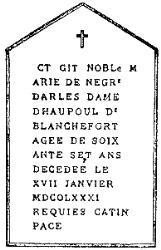
Pope Pius X condemned the separation of the Church from State in France in two encyclicals Bérenger Saunière started collecting Postcards – writing to numerous correspondents who sent him one or more (or even hundreds) at a time 12 March: Inventory of the Church of St Mary Magdalene performed following the split between Church and State with all Religious Buildings becoming the property of The French Republic, that Bérenger Saunière refused to sign – instead signed by Abbé Jean Rivière, the curé of Espéraza on 9 December September: Saunière’s sister Mathilde with her husband took the curé to Court in Couiza to force him to take responsibility for his mother for three months when she was ill, or either contribute 3 francs per day for that period – a draft of a letter in Marie Dénarnaud’s handwriting exists stating the priest could not afford such a sum – the Court ordered Saunière to pay the sum Republicans 441 seats; Right 174 seats (Conservatives 78 seats; Liberals 66 seats; Nationalists 30 seats)
Pope Pius X extends the Feast of the apparition of Our Lady of Lourdes to the whole church Bérenger Saunière produces a series of Rennes-le-Château Postcards presenting his personal achievements in the village and containing a ‘Historical Notice’: “Rennes-le-Château has its origins in the garrison town of Rhedae, which was home to approximately 30,000 people and which was founded in the 5th century by the Visigoths on the plateau extending south-eastwards which lies at the foot of the present-day village”
Article by Antoine Fagès entitled ‘From Campagne-les-Bains to Rennes-le-Château’ published in Bulletin de la Société d’Ètudes Scientifiques de l’Aude (Volume 20, 1909) describing a journey in 1908 to Rennes-le-Château how, “At the foot of the Missionary Cross (The Calvary) we notice a tombstone which was discovered at the time the church was paved. It was found lying flat in front of the high-altar. It is made of a very crumbly type of sandstone, and the carving which constitutes its beauty would have disappeared long ago if it had not been found with the design facing downwards. In this carving we can see two knights with lances in their hands, set in a Gothic design: could this be a reproduction of a tournament? Directly opposite this and to the left of the door of the church, serving as a base for the Virgin of Lourdes, is a pillar which formerly supported the high-altar. According to Abbé Saunière the high-altar was composed of a large flagstone set into the wall on one side and supported in front by two pillars, one of them coarse and the other just referred to, which appeared to us to date from the same period as the tombstone”
15 January: Bérenger Saunière received a letter from the Vicar General containing documents informing him that he had been transferred to the village of Coustouge and had to begin his Ministry there on 1 February – Saunière refused the Nomination and resigned his post on 28 January, that Bishop de Beauséjour would only accept if Saunière left Rennes-le-Château. Saunière’s response was to celebrate his future Masses in a Private Chapel (that he called his oratory) situated in the Villa Bethanie serving as prêtre libre – a non-stipendiary Free Priest without a parish – that lasted to his death 6 February: The Mayor of Rennes-le-Château wrote a letter to Monsignor de Beauséjour advising the Bishop that the Presbytery would not be made available to any replacement priest. 2 July: Abbé Henri Marty (1871-1924) priest of Coustaussa appointed Parish Priest of Rennes-le-Château and Charity Steward in charge of the orphans at Espéraza, arriving there on 4 July – “Rennes-le-Château: Last Sunday was installed the new priest, M. l’abbé Marty. The ceremony took place in the afternoon before a large crowd, composed of the parishioners of Rennes and of the faithful coming from neighbouring villages. After the customary ceremony, presided by M. l’Abbé Saglio, M. l’Abbé Marty addressed his new parishioners with a moving short speech, promising them all his affection and devotion. The gifts of farewell presented to him by his previous parishioners at Coustaussa was the best measure of how well he was appreciated there for his zeal” (La Semaine Religieuse de Carcassonne 9 July 1909). Abbé Marty was to be the Parish Priest of Rennes-le-Château until 15 December 1912 when he was replaced by the curé of Couiza
27 May: The Bishop’s Court of Carcassonne began an investigation of Bérenger Sauniere’s activities at Rennes-le-Chateau. The Bill of Indictment referred to:
* Trafficking in Masses 16 July: First Hearing that Bérenger Saunière failed to attend with his Defence Lawyer Maître Mis, and adjourned to 23 July that Saunière also failed to attend. Saunière was Sentenced in his absence, being suspended of his priesthood for one month and “obliged to make restitution of the fees for the Masses that he has not said” 23 August: Second Hearing that Saunière initially failed to attend and was adjourned until 5 November 1910 – and was to be the only Hearing that Saunière attended – with the Prosecution against Saunière outlining:
1) of having trafficked in fees for Masses for many years and especially since 1896; he has requested fees everywhere and has obtained a very large number of them, the discharge of which he is unable to prove; and: CONSIDERING that Abbé Bérenger Saunière admits to having requested and obtained a considerable number of Masses, without contesting the figures given by the Official Prosecutor; and: That nonetheless Monsieur Saunière has, since then, requested fees for Masses outside the Diocese, indirectly perhaps, but so obviously that several of his correspondents have not been deceived thereby, and they felt that they must forward his letters to the diocesan Bishop of Carcassonne; and Sentencing: We sentence Abbé Bérenger Saunière to withdraw to a house of priestly retreat or into a monastery of his choice, there to undertake spiritual exercises for a period of ten days, requiring him, within a period of two months, to present to us a certificate confirming that he has carried out these exercises. Bérenger Saunière carried out his period of penance in the Monastère de Prouille
2 September: Henri Rouzaud visited Rennes-les-Bains, where he witnessed the remains of a putative Roman temple – also mentioning that most of the Roman coins listed in the 1709 Mémoire by Abbé Delmas were taken by Dr Vaysse of Quillan. Rouzaud also referred to Boudet’s collection of coins and to his discovery of Gallo-Roman pottery; also mentioning the square marble C. POMPEIVS QVARTVS plaque (Cahier Nº 2, pp. 22-32).

12 September: Abbé Louis Gazel, the curé of Floure, suggests to Saunière “I don’t see what could prevent you from living in Lourdes, as we cannot go to Lourdes this week I am dropping the idea for this year” 15 October: Bérenger Saunière appointed Dr Huguet of the diocese of Agen as his Defence Lawyer, in place of Maître Mis, as advised by the Abbé Eugène Grassaud (1859-1946) 17 December: Bérenger Saunière sent a letter to The Holy Congregation of The Council in Rome to plea for his reinstatement as parish priest of Rennes-le-Château – The Congregation of The Discipline of The Sacraments judged the case obscure, and on 14 February 1911, despite a petition addressed by Saunière to the Sovereign Pontiff, The Congregation returned a ‘lectum recursum’ – which settled absolutely nothing – and also notified the Bishop of Carcassonne of Saunière’s manoeuvres Republicans 441 seats; Right 149 seats (Conservatives 129 seats; Liberals 20 seats) 5 December: La Semaine Religieuse de Carcassonne announced that Bérenger Saunière no longer had the right to say masses
Rennes-le-Château appears for the first time in a French Tourist Guide in La Cité de Carcassonne et les pays de l’Aude (Syndicat d’initiative de Carcassonne et de l’Aude, page 71, note 19) – citing «Rennes-le-Château, ses ruines et ses curieuses constructions modernes» 1 February: The Bishop of Carcassonne issued a strong warning against Bérenger Saunière in February, accusing him of selling masses without his consent and forbidding him to administer the Sacraments: COMMUNICATION OF THE BISHOPRIC Relative advice to M. l’Abbé Saunière Former priest of Rennes-le-Château Following an account dated 11 December 1910, in the supplement to Nr13 of VEILLEES DES CHAUMIERES, thus: Always as before inform Violette de l’Aisne, that M. l’Abbé Saunière, in retreat at Rennes-le-Château, by Couiza (Aude), France, performs masses at 1 Franc per time and is obliged to receive money for other religious works, literary articles, pamphlets, stamps, etc The Diocesan authority of Carcassonne deems it right to inform the faithful of this diocese, and so far as is able to inform other dioceses: 1* That M. l’Abbé Saunière, former priest of Rennes-le-Château, is in no way authorised to demand beyond this diocese, or to receive from other dioceses, money for saying masses 2* That he has not been given any assignment or authorisation, to undertake or conduct any works whatever having as their objective the (Catholic) Ritual Carcassonne, 1 February 1911 This announcement was also published in La Croix dated 9 February 1911, also reprinted in the anticlerical newspapers Le Rappel and Le XIXè Siècle on 11 February 1911, with the additional comment: “So, ‘Let's run off with the money!’ eh? [Sauvons la caisse was a catchphrase used by street entertainers in 19th century France]. Abbé Saunière is obviously selling his services far too cheaply by offering such a large discount and so, due to the unfair competition he's offering, he's being boycotted by the ‘traders’ association’ of the priests of his part of France” 18 February, and 9 March: The Carcassonne Bishopric made a formal command to Saunière to present his accounts to the Bishop of Carcassonne by 2 March at the latest. The Bishop of Carcassonne appointed a Commission of Enquiry under the direction of the Vicar General, Jean Saglio, charged with the detailed examination of Saunière’s accounts 13 March: Bérenger Saunière submitted 61 Invoices to the Bishopric to account for his expenditure, claiming that he had lost the rest, and that in any case he did not possess records for longer than two years 25 March: Saunière submitted an explanation of the source of his finances since arriving at Rennes-le-Château, together with a ‘List of Donors’ producing a figure of 193,150 Francs 8 April: Bérenger Saunière’s letter to the Carcassonne Bishopric protesting “You are aware of Rome’s first decision. Does it refer anywhere to the keeping of accounts? Not at all” 14 July: Saunière submitted a ‘Statement of Expenditure’ claiming the renovation of his church and the building of his Estate had cost 193,050 Francs (alleging the Villa Bethanie cost 90,000 Francs, the Tour Magdala 40,000 Francs) August: Bérenger Saunière goes on a Pilgrimage to Lourdes 4 October: The Saglio Commission of Enquiry submitted its Report, stating that only 36,000 francs could be accounted for out of the 193,000 francs that Bérenger Saunière claimed to have spent on his various works (his original Defence draft claimed only 71,600 francs), also referring to the discovery of a receipt dated 8 July 1902 of the sum of 412.50 francs for furnishing and the roofing of the Villa Bethanie 21 November: The Third Hearing, Saunière and his Defence Lawyer Dr Huguet did not attend, adjourned until 5 December 27 November: Bérenger Saunière negotiates with the Parisian Banque Petitjean over the sale of his Estate 5 December: The Third Hearing – Saunière and his Defence Lawyer Dr Huguet not attending again – the Sentence of the Court was carried out in their absence: “We condemn the priest Abbé Bérenger Saunière to a suspension a divinis for a period of three months, effective from the day of the notification of the present sentence, which suspension in any case will continue until he has undertaken the restitution into the hands of the rightful owner and according to canon law of the goods misappropriated by him” The three month suspension from priestly duties levelled against Bérenger Saunière on 5 December 1911 was to last a lifetime, since the priest was unable to fulfill the obligation of “the restitution into the hands of the rightful owner and according to canon law of the goods misappropriated by him” – an article published in La Semaine Religieuse de Carcassonne dated July 1915 reminded the local parishioners of his suspension from the priesthood and a letter to Saunière dated 22 January 1917 – the date of his death – from his Defence Lawyer Canon Huguet, referred to an offer made in August 1916 by the Bishop that the suspension would be lifted only if he were to accept the position of priesthood in another parish At no stage during the entire Trial did Bérenger Saunière ever show his Account Books to the Court of the Bishopric – instead he produced a bogus “List of Donors” that only served as an evasive tactic in order to hide his guilt of the Charge of Trafficking in Masses that was levelled against him.
5 February: Church of the Blessed Virgin Mary at Notre Dame de Marceille decreed a Minor Basilica 14 June: Letter to Bérenger Saunière, who placed his Estate up for sale through the Parisian Banque Petitjean 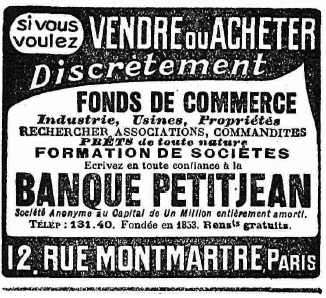
August: Bérenger Saunière goes on a Pilgrimage to Lourdes
The Crédit Foncier de France offered Bérenger Saunière a 6,000 Francs loan, having valued the priest’s Estate at 18,000 Francs, after he had asked it for a loan to clear his debts August: Bérenger Saunière goes on a Pilgrimage to Lourdes
Republicans 475 seats; Right 120 seats (dont Fédération rép. 37; Action liberté 23; divers droite 15; non inscrits 45) 7 January: Furniture Dealer Gme Noubel presses Bérenger Saunière over his debts: “On checking your account balance I note that you still owe me 6,037 francs, not including interest, for furniture mostly supplied to you in 1908. As we have to come to some sort of conclusion regarding this matter, I am asking you to settle this outstanding balance. Should you not be able to pay me the whole amount I would ask you to agree to me taking out a lien on your property. That would not cause you any inconvenience and I myself would feel much happier about things. On these terms you could then take the time you needed to settle the bill, paying me interest half-yearly at the customary rate of 5%. I look forward to hearing from you” May: Bérenger Saunière plans to build a summer house – but gave up on the idea at the end of 1915 because the price was too high: 2,500 francs 20 August: Pope Pius X died 3 September: Pope Benedict XV (to 1922)
La Semaine Religieuse de Carcassonne, 3 July 1915 October: Bérenger Saunière goes on a Pilgrimage to Lourdes
Bérenger Saunière enjoyed a second period of success at selling masses – although not as successful as during the first period of 1896-1905– France was at War and the priest received requests for masses from neighbouring dioceses, despite his suspension
Letter by Canon Huguet to Bérenger Saunière, dated 22 January 1917 (extract):
22 January: Bérenger Saunière died: his suspension only lifted in articulo mortis (“at the moment of death”). The Last Rites were administered by Abbé Jean Rivière (1867-1929), the curé of Espéraza. Saunière was not described as a priest in the Obituary column of Semaine Religieuse de Carcassonne dated 27 January. Marie Dénarnaud could not afford to pay for his coffin until 12 June 1917. Claims that Bérenger Saunière was immensely rich in 1917 and had ambitions to undertake another building project were the inventions of Noël Corbu of the 1950s 23 January: Death Certificate of Bérenger Saunière 24 January: Bérenger Saunière buried at 10 o’clock in the morning 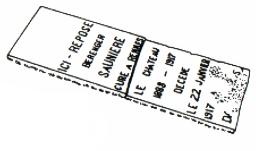 25 March: Town Council of Rennes-le-Château approves the rental of the village Presbytery to Marie Dénarnaud from 15 April, in her own name, for the next nine years
15 April: Marie Dénarnaud borrows money for the first time – 1,100 francs to pay interest on a loan from the Crédit Foncier de France and to pay off some outstanding bills 10 May: Abbé Eugène Grassaud informs Marie Dénarnaud about the arrival of a potential buyer for Saunière’s Estate. He advises to sell it for 200,000 francs – down if necessary to 190,000 francs October: The legal succession of Bérenger Saunière is finally settled by a Certificate of Insolvency due to an absence of assets. The Saunière family will therefore inherit nothing
Joseph Dalbies, Mayor of Rennes-le-Château 1919-1924
Marie Dénarnaud owes 3,638 francs to the person who lent her 1,100 francs in 1918, informing them that she is unable to pay
6 February: Pope Pius XI (to 1939)
Marie Dénarnaud takes as her lodger the new village schoolteacher, since the commune does not have the financial resources to accommodate her elsewhere. The young schoolteacher, who is in her first teaching post, will remain there until her departure from Rennes-le-Château in 1929. Her successors as the village schoolteacher will be similarly lodged, in return for payment, at the Presbytery, the last of them from 1949 to 1954 The Testimony of René Espeut (1911-1978) from Perpignan: “...I would like to state that the Abbé Saunière never found any treasure. You see, I was actually born in Espéraza. My family knew the Dénarnaud family. In 1925, when I was 14 years old, I used to go up regularly to Rennes-le-Château. I used to go and see Marie Dénarnaud. She was living in rather pitiable circumstances. I did my harmony lessons on the organs in the salon, which have now disappeared. In the library of the Tour Magdala, I read all the correspondence of the priest with his ecclesiastical lawyer at the time of his trial at the court of Rome. It was by collecting money for saying masses that the Abbé Saunière was able to construct his estate. He published small ads in the Catholic press throughout the world. I was able to read their texts, and I have seen thousands of replies. I would also like to state that, between the ages of 15 and 20, I thoroughly searched the area within a 500-metre radius of the Villa and the Tour Magdala. I never found the slightest evidence of a hidden treasure. I am telling you this out of respect for the truth...” (Midi Libre, 13 February, 1973) François Pechou, Mayor of Rennes-le-Château 1925-1935
Article by Henri Guy entitled ‘Reproduction of a Carolingian Gravestone discovered in Rennes-le-Château’ published in Bulletin de la Société d’Ètudes Scientifiques de l’Aude (Volume 31, page 197) describing the discovery of a Carolingian Gravestone beneath the Altar of the church in Rennes-le-Château in 1884-1885, and how it was situated in a garden before the cemetery, set on a platform as a souvenir monument
Emmanuel Coste, Bishop of Carcassonne 1930-1931 (transferred to Aix)
Brochure-format of Elie Tisseyre’s 1906 article entitled ‘Excursion on 25 June 1905 to Rennes-le-Château’ deposited in the Bibliothèque Municipale of Carcassonne by “Marty” 
Jean-Joseph Pays, Bishop of Carcassonne 1932-1951
Étienne Delmas Mayor of Rennes-le-Château, 1935-1968
The Testimony of Dr Jean Girou (1889-1972):
Urbain Gibert (1903-1989) recounted a Fairy-Mitouni legend about the shepherd Jean at Rennes-le-Château – without knowing anything about the legend of Ignace Paris that Noël Corbu was later to make popular during the 1950s and 1960s. Urbain Gibert co-Founded ‘Groupe d’études régionalistes et de folklore audois’ and the journal Folklore (Aude).
2 March: Pope Pius XII (to 1958)
Urbain Gibert reprised the legend of the Devil’s Treasure in 1941 as originally given by Auguste de Labouïsse-Rochefort in his book Voyage à Rennes-les-Bains published in 1832 (“la légende de Blanchefort”, Folklore (Aude) N° 23, juillet 1941, pp 153-155). Later utilised by the Rennes-le-Château mythmakers
22 July: Marie Dénarnaud bequeathed Saunière’s Estate by Holographic Will to Noël and Henriette Corbu. Noël Corbu settled Marie Dénarnaud’s debts of 31,529 francs.
4 March: Article by Roger Crouquet (1901-1987) entitled Visite à Une Ville Morte: Rennes-le-Château published in the Belgian magazine Le Soir illustré (number 819), is the earliest known press-article about Bérenger Saunière – portrayed as “a rather strange priest who preferred wine and women to practising the priesthood. At the end of the last century he had a rather original idea. He placed in foreign newspapers, especially in the United States, an advertisement announcing that the poor priest of Rennes-le-Château lived among heretics and had only the most meagre of resources”, and “The stoup which decorates the entrance to the chapel is carried by a horned devil with cloven hooves. An old woman remarked to us: ‘It’s the old priest, changed into a devil’” – the inhabitants did not refer to any treasure discovery but to gifts and to trafficking in masses, indicating that the source of Saunière’s wealth was an open secret to the villagers in 1948. Neither Noël Corbu or Marie Dénarnaud were mentioned in this article
Jean Bousquet village schoolmaster at Rennes-le-Château, and a lodger with the Corbu family (died 21 June 1989). His testimony:
Pierre-Marie Joseph Puech, Bishop of Carcassonne 1952-1982 (retired)
January 29: Marie Dénarnaud died aged 85. Noël Corbu inherits her archives relating to Bérenger Saunière 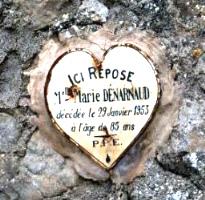
October: Noël Corbu temporarily becomes a member of la Société d’Ètudes Scientifiques de l’Aude
April: Noël Corbu transforms the Villa Béthanie into a restaurant called Hotel de La Tour
12, 13, 14 January: Albert Salamon’s series of articles entitled ‘The Fabulous Discovery of The Millionaire Priest of Rennes-le-Château’ in La Dépêche de Midi. The origin of The Myth of Rennes-le-Château involving Noël Corbu, who claimed for the first time (12 January) that, while the old Church altar was being dismantled “one of the old pillars of the altar providentially revealed a hole, from where slipped some tubes of hollow wood containing parchments written in Latin”. Noël Corbu also claimed (14 January) that Bérenger Saunière had “thanks to the parchments falling into his hands…discovered the famous treasure of Blanche of Castile, a royal treasure equivalent now to a minimum of 50 billion francs, since it comprises in part 18,500,000 francs in gold pieces, which at the very least is worth at the present time, in view of its historic and archaeological value, more than 400 million francs” 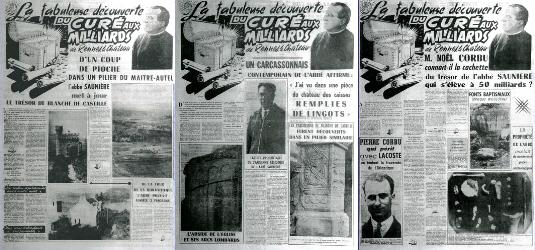
12 January: series of articles entitled ‘Trésors cachés de l'Aude’ published in le Midi Libre included: ‘Le fabuleux trésor des Wisigoths a-t-il été découvert par le curé de Rennes-le-Château?’ March: Dr André Malacan (1927-1997) obtains permission from the necessary authorities to conduct the first official archaeological excavation of the church of St Mary Magdalene in Rennes-le-Château. The “excavators” start by “thoroughly examining the subsoil of the church”. Once “the tiling had been properly removed” they come across “a crumbly layer of soil where, at a depth of about one metre, in a layer of lime, there still [lay] some bones”. But, “besides this burial” – the location of which is not specified – they do not discover “anything [...] worthy of interest” [Descadeillas, Mythologie du Trésor, 1974]. This was where Malacan found a skull marked with a groove – a “ritual” groove according to its discoverer. 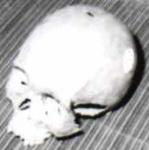 On 31 March a dowser Monsieur d’Esperonnat suggested they dig Saunière’s garden where they exhumed the skeletons of three men, to which scraps of flesh and clothing still adhered. André Malacan was interested in Parapsychology and in 1952 authored La Sorcellerie et les Sorciers dans l’Oeuvre et la Pensée d’Ambroise Paré (Carcassonne, Impr. Bonnafous et Fils) The ‘La Dalle des Chevaliers’ referred to in articles by Elie Tisseyre (1906), Antoine Fagès (1908) and Henri Guy (1927) was transferred from Rennes-le-Château to the stone-carving depository in the City of Carcassonne, later displayed in the City Museum. Discovered by Pierre Embry, Curator of Classified Material for the department of the Aude
Robert Charroux (1909-1978), founder of Club des Chercheurs du Trésors in 1951, with his wife Yvette, unsuccessfully scanned Rennes-le-Château for gold and jewels using a metal-detector; joined by the actress Denise Carvenne (1918-1980). Visitors included the dancer and actress Lycette Darsonval (Alice Andrée Marie Perron, 1912-1996) and artist Jean Raffy Le Persan (1920-2008) Pendulum enthusiast and hypnotist Rolland Domergue with medium Germaine Goyard also soon appeared on the scene hoping to find evidence of the treasure discovered by Bérenger Saunière. The beginning of the Pilgrimages to Rennes-le-Château by those becoming convinced by the now-quickly escalating post-1956 myths and legends 28 October: Pope John XXIII (to 1963)
Jacques Cholet (1911-1985): Chief Engineer for the Parisian transport authority Régie Autonome des Transports Parisiens (R.A.T.P.), undertook official excavations in the church of Rennes-le-Château, yielding negative results:
29 April: Marina Grey (1919-2005) directed La Roue Tourne (‘The Wheel Turns’) that was the first television documentary about Bérenger Saunière at Rennes-le-Château – broadcast on the French channel RTF (Radiodiffusion-Télévision Française), with Noël Corbu playing the role of Bérenger Saunière Rolland Domergue, now also the excavation partner of Jacques Cholet, discovers a forged parchment in a well dated “25 June 1249” and ascribed to Brother Dominic de Mirepoix – a hoax perpetrated by unknown villagers using a page from a 17th century book, with enigmatic words in Chinese ink added, placed in a bottle dating from Saunière’s time
14 June: Noël Corbu, Essai Historique sur Rennes-le-Château – five paged manuscript deposited in the ‘Archives de l’Aude’ in Carcassonne – Noël Corbu was given a tape-recorder by a guest to The Hotel de La Tour in 1962 who was unable to pay his bill and the text was recorded onto that – used by Noël Corbu to entertain his guests 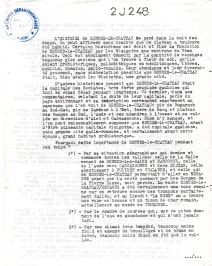
April: Robert Charroux, Trésors du Monde enterrées, emmurés, engloutis (Éditions Fayard 1962; J'ai Lu 1968; Revised Edition, Éditions Fayard 1972; Éditions du Trésor 2013) 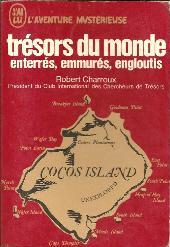
July: Frances-Inter Radio Programme presented by Robert Arnaut and Robert Charroux, and interviewing Noël Corbu, referred to the gravestone of Marie de Negri d’Ables and to the existence of another “stone” bearing the inscriptions “SAE” and “SIS”, announcing: “It is sincerely hoped that an appeal will be launched on the air-waves to find two triangular stones bearing various key inscriptions. These two stones could be in Paris. One bears the following inscription: ‘P.S. Reddis cellis regis arcis praecum’ and the other: ‘Sae sus in media linea ubi M cecat linea parva P.S. Praecum.’” 1 August: The newspaper La Dépêche du Midi repeated the appeal made on the Frances-Inter Radio Programme
21 June: Pope Paul VI (to 1978)
Henri Buthion (1924-2002) buys Saunière’s Estate from Noël Corbu
28 July: Municipal Council of Rennes-le-Château unanimously voted a local by-law prohibiting excavations in the village 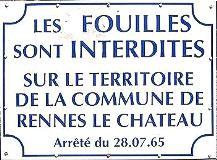
Spring: Gérard de Sède, L’Or de Rennes (René Julliard), later entitled Le Trésor Maudit de Rennes-le-Château in 1968 (J’ai Lu). Revised Edition entitled Signé: Rose+Croix: l'Énigme de Rennes-le-Château in 1977 (Éditions Plon). 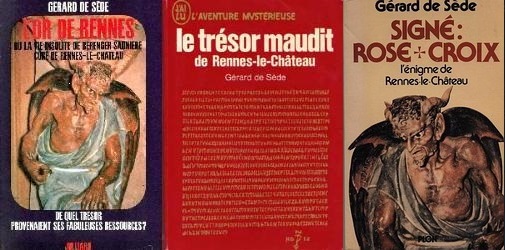 1 June: Georges Boyer, Focus And A Warning (La Semaine Religieuse de Carcassonne) 9 December: Georges Boyer commented in L’Indépendant: “That the Abbé Saunière could have received the last sacraments two days after his death is absolutely incredible. And that dear old Abbé Rivière, the curé of Espéraza, who died in 1929, and who was the Dean of Coursan (where I got to know him well) never smiled again after the death of the Abbé Saunière, to whom he had administered extreme unction, is another puzzling statement, as I myself saw him roar with laughter”
20 May: Noël Corbu killed in a car crash, buried in the cemetery of Rennes-le-Château in a tomb next to his wife Henriette who had died in 1966, that was situated close to the grave of Bérenger Saunière Bérenger Saunière’s grave dynamited Henri Lembège, Mayor of Rennes-le-Château 1968-1987
Village of Rennes-le-Château obtained the necessary permission to bring back ‘La Dalle de Chevaliers’ from Carcassonne, becoming stored in a glass-cabinet display aimed at tourists to the village
René Descadeillas (1909-1986), Mythologie du Trésor de Rennes: Histoire Veritable de L’Abbé Saunière, Curé de Rennes-Le-Château (Mémoires de la Société des Arts et des Sciences de Carcassonne, Années 1971-1972, 4me série, Tome VII, 2me partie; 1974) [Reprinted 1989, Savary, Carcassonne; 1991, Editions Collot, Carcassonne] 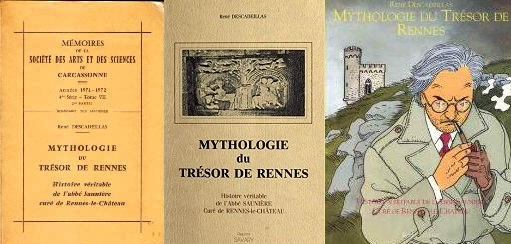
The ‘Jesu medela vulnerum’ inscription at the bottom of the Main Altar in the church of Rennes-le-Château erased by vandals
26 August: Pope John Paul I (deceased 28 September 1978) 16 October: Pope John Paul II (to 2005)
2 March: François Mitterrand (1916-1996) visited Saunière’s Estate and the church of St Mary Magdalene in Rennes-le-Château during his Presidential Campaign – accompanied by the Président of the Conseil Générale of the Aude (Robert Capdeville, 1919-2001) and the Mayor of Rennes-le-Château (Henri Lambège). This inspired Pierre Plantard to later falsely claim that Roger-Patrice Pelat (1918-1989) was the Grand Master of the Priory of Sion, resulting in his arrest and detainment in 1993 by Judge Thierry Jean-Pierre (1955-2005) when he was investigating the scandal involving French Prime Minister Pierre Bérégovoy (1925-1993), resulting in the Police search of Plantard's house and Plantard's retirement from his Priory of Sion activities.
Michael Baigent, Richard Leigh, Henry Lincoln, The Holy Blood and The Holy Grail (Jonathan Cape) – the book responsible for placing the village of Rennes-le-Château onto Mappa Mundi – although initially successful due to several highly popular documentaries shown on British Television during the 1970s – it later transformed into an essential grimoire cherished by believers in assorted esoterica, followers of alternative history and New Age Romantics 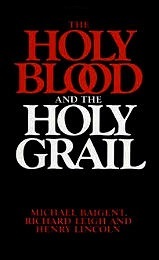 Jacques-Joseph-Marie Despierre, Bishop of Carcassonne 1982-2004 (retired)
Jacques Rivière (1945-2006), Le Fabuleux Trésor de Rennes-Le-Château! Le Secret de L’Abbé Saunière (dedicated to Déodat Roché, with Notes Complementaires by Gilbert Tappa listing Saunière’s 61 Invoices; Editions Bélisane, 1983) First part of Rivière’s book is devoted to Bérenger Saunière’s Ministry and its political background. Second part is devoted to the restoration of Saunière’s church and reproducing the Invoices. Third part is devoted to the construction of Saunière’s Estate. Fourth part is devoted to Saunière’s Ecclesiastical Trial 1910-1911, reproducing Saunière’s correspondence and providing transcripts of the material in the Carcassonne Bishopric. An essential book for anyone interested in Bérenger Saunière and Rennes-le-Château 
Bérenger Saunière (1852-1917), Mon Enseignement à Antugnac, 1890 (edited by the Abbé Bruno de Monts, Editions Bélisane) 
8 March: Lampe Rosaire in the church of Rennes-le-Château destroyed by vandals
Pierre Jarnac, Histoire Du Trésor de Rennes-Le-Château (L’Association pour le développement de la lecture; 1985) 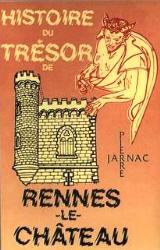
Claire Corbu, Antoine Captier, L’Héritage De L’Abbé Saunière (Editions Bélisane; 1985; 2000; 2012) – although written from the perspective of ‘Saunière discovering a secret’ – the book presents a Treasure Trove of Archive relating to Bérenger Saunière and Marie Dénarnaud – actual reproductions of correspondence, notable photographs, drafts of Wills, as well as the preliminary drafts Saunière prepared for his defence during his 1910-1911 ecclesiastical Trial. The book ends on a poignant note about Saunière: “If the soul of the Abbé, so often invoked by mediums, did return to earth, it would certainly be disturbed by the sulphurous odour of occultism which has attached itself to his memory. At the same time, he would no doubt derive some satisfaction from seeing the long queue of tourists who have come to admire his church, even if they do not visit it for the pious reasons for which he himself might have hoped” 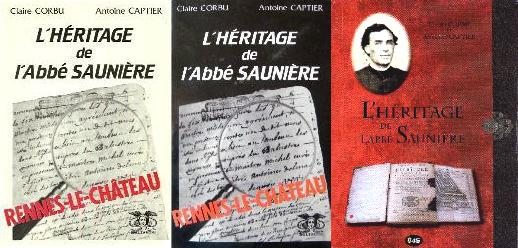
Jean-Michel Thibaux published his novel L’Or du Diable (Paris: Éditions Olivier Orban) that inspired the 6 part Television Mini-Series of the same name shown on FR3 in 1989, Jean-François Balmer playing the role of Bérenger Saunière (directed by Jean-Louis Fournier) 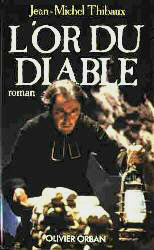
Roger Pujol, Mayor of Rennes-le-Château 1987-1997
Pierre Jarnac, Les Archives De Rennes-Le-Château, Tome 1 & 2 (Editions Bélisane; 1987-1988) 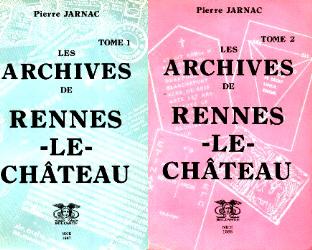
January: Émile Saunière, Moi, Bérenger Saunière, Curé de Rennes-le-Château (Two Volumes, Espéraza, 1989; Volume One: “Historique et Illustrations”, Volume Two: “Révélations et message”). Volume Two re-published entitled Moi, Bérenger Saunière: Pensées et réflexions transcendantes de l'abbé Bérenger Saunière (Caussade: S. Pagenelle, 2005). 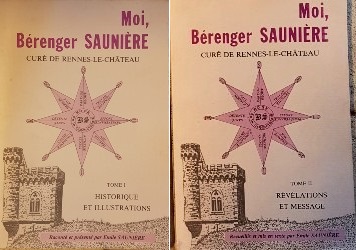
23 February: Declaration of Les Amis de Bérenger Saunière to the Prefecture of Alpes-Maritimes. An association that was part of Editions Bélisane that also published the journal Les Cahiers de Rennes-le-Château (first issue published in 1984) 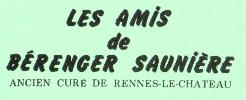
10 May: Formation of Association Terre de Rhedae – to perpetuate the memory of Bérenger Saunière and to welcome and inform visitors to the ‘Saunière Museum’ of its wider Mission – the conservation, management, promotion and the development of the commune. The first issue of its journal was published in January 1990 
June: Abbé Bruno de Monts (1910-2003), Bérenger Saunière, Curé à Rennes-Le-Château 1885-1909 (Editions Bélisane, Collection Les Amis de Bérenger Sauniére; 1989; 2000) 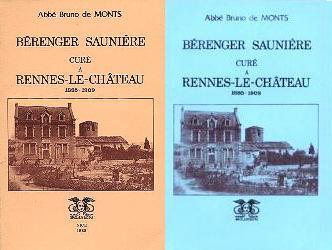
Jean-Jacques Bedu, Rennes-Le-Château: Autopsie d’un Mythe (Ed. Loubatières; 31120 Portet-sur-Garonne; 1990, 2002) 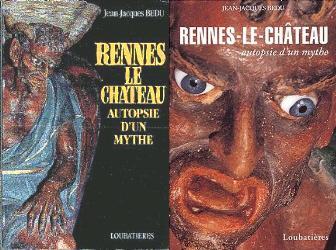
Formation of Le Reflet de la Fabuleuse Rhedae by Celia Brooke (1944-2012) and Nicole Dawe (President, Christophe Jankowiak) – “an association which aim is to provide a welcome and information centre for visitors to the area interested in its history and legends and is particular for the large English-speaking percentage”, working alongside Association Terre de Rhedae – the Number 1 issue of Le Reflet – Newsletter in English was published in Autumn, 1993 
The original ‘Visigothic Pillar’ transferred to the ‘Saunière Museum’ following the renovation and re-opening of the Museum on 1 July, and replaced by a replica manufactured by Alain Féral – as a result of becoming more and more eroded and damaged due to natural weather conditions. The Statue of Our Lady of Lourdes was restored and repainted by Alain Féral It was when the ‘Saunière Museum’ was re-opened on 1 July that confusion arose over the display of a “B.S. Bookplate” 30 December: Henry Buthion sold Saunière’s Estate to Bert Gerards and Robert L. Kroon (1924-2007)
Jean-Luc Robin (1949-2008) leases Saunière’s Estate and opens it to the public. Renovations carried out on the Villa Bethanie and Saunière’s Private Chapel, refurbishments on the Tour Magdala – with the belvedere becoming the site for a second museum in the village that displayed the original relics, documents and Priest’s Vestments – that were transferred from the original ‘Saunière Museum’ situated in the Presbytery run by the Association Terre de Rhedae 26 July: The church of St Mary Magdalene was registered a Historical Monument 
Vinciane Denis, Rennes-Le-Château, Le trésor de l’abbé Saunière (Editions Marabout, Collection “les Grands Formats”; 1996) 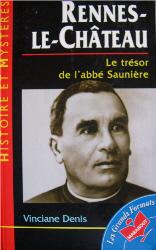
Les Cahiers de Rennes-le-Château Number 11 (“Le Vrai Trésor” edition) containing essential new information about Bérenger Saunière in articles written by Abbé Bruno de Monts 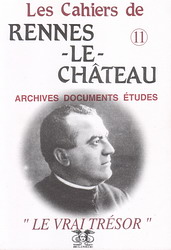
21 April: The statue of the Devil in the church of Rennes-le-Château vandalised – decapitated with its right hand torn off June: François Grassaud, Rennes-le-Château: Chroniques du Passé (Axat; also entitled Rennes-le-Château. François Bérenger Saunière prêtre, curé de Rennes-le-Château de 1885 à 1909. Dossier Secret, 1999, 2008; translated into English entitled The Abbé Saunière: From 1885 to 1909, Priest of Rennes-le-Château, 2000) 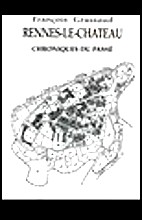
Guy Matheliè-Guinlet, Rennes-le-Château: Le Mysterieux Trésor de l'Abbé Saunière (Bordeaux: Aubéron, 1997) 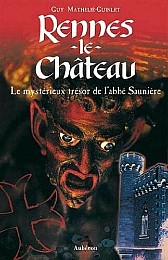
Bérenger Saunière, Curé : Cahier de Correspondances 1915-1917 (Avant-propos Pierre Jarnac, 1997) 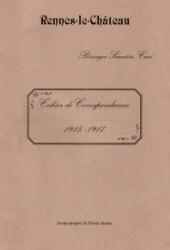
13 October: Declaration of Club Horizon to the Sub-Prefecture of Limoux. Based in the Villa Béthanie – its aim was to promote the socio-economic and cultural history of Rennes-le-Château Jean Balaguero, Mayor of Rennes-le-Château 1997-1998
Germain Blanc-Delmas, Chronique sur Rennes-le-Château: Marie d'Etienne, Le trésor oublié (éditions Envolée) Germain Blanc-Delmas is the son of Étienne Delmas, the former Mayor of Rennes-le-Château 1935-1968 
Jean-François Lhuilier, Mayor of Rennes-le-Château 1998-2008
The Municipality of Rennes-le-Château buys Saunière’s Estate
29 June: Declaration of Rennes-le-Château – Le Cercle to the Paris Prefecture of Police. Based in Paris, its aim was to establish contact amongst all similar groups and members for the exchange of information and ideas in the search of knowledge on the theme of “Rennes-le-Château” 1 August: Declaration of Association Internationalle des Chercheurs de Trésors (A.I.C.T.) to the Sub-Prefecture of Limoux. Founded by Jean Francois Crinon, Michel Bellec, Jean-Claude De Brou, Robert Montminy – its aim to conduct historical researches and investigations pertaining to the discovery of treasures, organising debates and conferences about the histories of treasures 
12 September: Declaration of L’Association pour la Restauration de la Tombe de Bérenger Saunière to the Paris Prefecture of Police – its aim was to restore the tomb of Bérenger Saunière. Now called L’Association pour les Recherches Thématiques de Bérenger Saunière (ARTBS). President: Yves Lignon. Its Bulletin is entitled Actes du Colloque d'Études et de Recherches sur Rennes-le-Château 
Pierre Jarnac, Bibliographie de Rennes-le-Château: Les Cahiers de Rennes-le-Château Number 12 (Editions Bélisane) 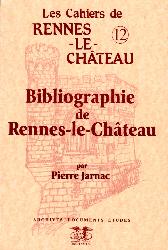
Bill Putnam, John Edwin Wood, The Treasure of Rennes-le-Château: A Mystery Solved (Sutton Publishers 2003; Revised Paperback Edition, Sutton Publishers 2005) 
Dan Brown, The Da Vinci Code (Random House) – The novel responsible for accelerating the most interest in Rennes-le-Château since the publication of The Holy Blood and The Holy Grail by Michael Baigent, Richard Leigh and Henry Lincoln in 1982. It has become the biggest-selling novel of all time. Other titles that inspired Dan Brown included The Woman With The Alabaster Jar by Margaret Starbird (1993) and The Templar Revelation by Lynn Picknett & Clive Prince (1997) 
12 February: Declaration of Société Perillos to the Sub-Prefecture of Narbonne, its aim to promote the historical value of the abandoned village of Périllos, by Perpignan. President: André Douzet, who has been promoting the existence of a ‘Maquette’, a topographical model of Jerusalem that he claims was commissioned by Bérenger Saunière – as well as unproven links between Saunière and Périllos, Opoul and Lyon (producing spurious receipts that cannot be independently examined), since the publication of Lumières Nouvelles sur Rennes-le-Château, Spécial Numéro 1, CEP d’OR de PYLA in 1995, written by Antoine Bruzeau and “Benoist Rivière” (André Douzet). 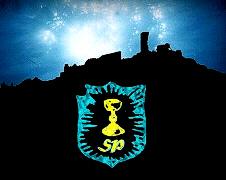
20 August: Digging under the Tour Magdala in search of buried treasure headed by the Mayor of Rennes-le-Château yielded negative results – with Professor Robert Eisenman, Professor Andrea Baratollo and Michael Baigent witnessing proceedings as spectators – the archaeological project dating from April 2001 sponsored by The John Merrill Foundation. The event was filmed for a History Channel documentary entitled Investigating History: The Holy Grail that was shown on 19 April 2004. Ground Penetrating Radar Scans of the church at Rennes-le-Château conducted by Professor Harry Jol allegedly revealed the existence of a possible burial crypt beneath the church floor (although not all archaeologists were convinced of this) – permission to physically excavate the church had been refused by the Archaeological Body of France (Directions Régionales des Affaires Culturelles, or DRAC), due to the frail condition of the building, and DRAC later filed a complaint against the Mayor of Rennes-le-Château for illegal excavations after digging under the Tour Magdala. The archaeological project had been inspired by the claims of American citizen Jean-Louis Genibrel, who claimed his grandfather's uncle was a foreman of Saunière's works. The story of Bérenger Saunière burying a “wooden box about the size of a baby” under the Tour Magdala was first published in the article “Les Démons du Midi” by Pierre Sourbès in L'Indépendant of 3 December 1967.
14 September: Bérenger Saunière’s remains re-interred in a mausoleum situated in the village cemetery, from which time it became closed to the General Public A Notice on the Cemetery Door read: L’ACCESS DU CIMETIERE EST RESERVE AUX FAMILLES DES DEFUNTS. Les familles extérieuses à la commune ne possédant pas de clé s’adresseront à la “Boutique du Presbytère”. Tous le jours de: 10H à 12H, et de 14H à 16H30.  Marie-France Etchegoin, Frédéric Lenoir, Code Da Vinci: L’Enquête (Éditions Robert Laffont, Paris, 2004) – “The story of Rennes-le-Château functions as a powerful catalyst, attracting all the mysteries, all the speculations – as well as all the deceptions that swarm in the esoteric nebula. We have before us the creation of a contemporary myth” 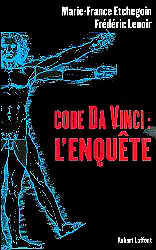 L'Association Légendes d'Oc founded by Stéphanie Buttegeg, dedicated to promoting the cultural, tourist and historical heritage of the Razès. Its Bulletin is entitled A la Recherche du Secret Perdu Alain-Emile-Baptiste Planet, Bishop of Carcassonne 2004-
19 April: Pope Benedict XVI (to 2013) April: Bernardo Sanchez da Motta, Do Enigma de Rennes-le-Château ao Priorado de Sião: História de um Mito Moderno (Editora Ésquilo; reprinted in 2019) 
15 September: Massimo Introvigne, Gli illuminati e il Priorato di Sion. La verità sulle due società segrete del Codice da Vinci e di Angeli e Demoni (Edizioni Piemme) 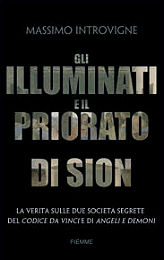
30 November: Declaration of Le Cercle du 17 Janvier to the Sub-Prefecture of Limoux. Founded by Asmodé, Blanchefort, Deg, and Rambiel – its aim to hold annual meetings on 17 January for people interested in the subject matter of Rennes-le-Château. Members of this Association have voluntarily restored the grave of Abbé Antoine Gélis (1827-1897) in Coustaussa in 2005, the Delmas Calvary in Rennes-les-Bains on 17 January 2007, the grave of Abbé Jean Vié (1808-1872) in Rennes-les-Bains on 17 January 2009 
10 December: Declaration of Association Rennes-le-Château.doc to the Sub-Prefecture of Provins. Created by “Patrick Mensior” – its aim is to collect and to collate all the known documentation relating to Bérenger Saunière and Rennes-le-Château – with updates provided in the Bulletin Parle-moi de Rennes-le-Château 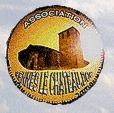
26 April: Declaration of Le Cercle Boudet to the Sub-Prefecture of Limoux – historical research on Abbé Henri Boudet (1837-1915) and the histories of Rennes-le-Château and Rennes-les-Bains. Also called Cercle Boudet 11 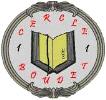
2 November: La Dépêche du Midi published an interview with Jean-François Lhuillier, Mayor of Rennes-le-Château, entitled ‘Rennes-le-Château: After Six Years’ Research The Mayor Pours Cold Water On All The Wild Theories That Surround It’ 6 November: Declaration of L’Association Pour La Préservation de l’Âme de Rennes-le-Château (APARC) to the Sub-Prefecture of Limoux. Founder and Chairman was Jean-Luc Robin (1949-2008), with Henry Lincoln Honorary President – to promote the heritage of the village, to prevent further vandalism, and to encourage harmony. André Galaup was elected Chairman of APARC on 4 October 2008 following the death of Jean-Luc Robin 
March: Renovation work on the Presbytery in Rennes-le-Château began 10 June: Gérard Jean – of the Société d’Études Scientifiques de l’Aude & Académie des Arts et Sciences de Carcassonne – stated at the annual 2007 ARTBS seminar – that the stèle of Marie de Negri d’Ables, Countess Hautpoul-Blanchefort still existed (in private ownership) – that it was taken away by Monsieur Marty to Carcassonne during the excursion led by Elie Tisseyre to Rennes-le-Château in 1905 (Patrick Mensior, Parle-Moi de Rennes-le-Chateau! Number 4, “Quelques mots sur Antoine Fages”, pages 108-109, 2007). Most probably another myth. 
30 September – 1 October: The Miraculous Statue in the Minor Basilica of Notre Dame de Marceille vandalised – decapitated with its Mantle torn off
17 April: Richard Heygate wrote a letter to the Rennes-le-Château Municipal Council asking it for permission to do Ground Penetrating Scans in the village church, which was approved. L’ABC de RLC – l’Encyclopédie de Rennes-le-Château, edited by Patrick Berlier, Daniel Dugès, Thierry Garnier, Antoine Captier, Michel Vallet, Franck Daffos, Jean Brunelin, Gil Alonso-Mier, Georges A D Martin, Michel Crozet, Jean-Luc Chaumeil, Alain Caradec, Laurent ‘Octonovo’ Buchholzer, Gabriel D’Atilia, Jean-Pierre Monteils, Jocelyne Bartolini, Paul Saussez, Gino Sandri, André Goudonnet (preface by Michel Vallet; Arqa editions, April 2008; 684 pages) 
Claudie Voisenat (Editor), Imaginaires archéologiques (preface by Daniel Fabre and Christian Hottin), Cahier Number 22, Ethnologie de la France, Éditions de la Maison des sciences de l’homme 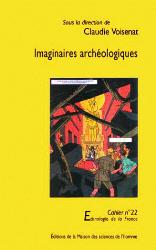
Alexandre Painco, Mayor of Rennes-le-Château 2008-
1 March: Opening of the new ‘Bérenger Saunière Museum’ in Rennes-le-Château. Preliminary plans were drawn-up in August 2008 involving Mariano Tomatis, Antoine Captier, Daniel Dugès, Christian Doumergue and the Municipality of Rennes-le-Château to produce an extensive and comprehensive presentation of all the major data on the subject matter to visitors in four languages – English, Italian, German and Spanish. Mariano Tomatis was awarded the ‘Prix Bérenger Saunière’ on 5 June 2010 by ARTBS (L’Association pour les Recherches Thématiques de Bérenger Saunière) for his innovative efforts in designing the new version of the Museum 4 June: Letter by Henri Marchesi, the Regional Conservator of Archaeology, to Albert Fagioli, responding to his plans to undertake excavations at Rennes-le-Château
3 June: Declaration of Association Trésor Cathare to the Sub-Prefecture of Limoux, based in Campagne-sur-Aude. Officially created 10 July 2010 by Yannick Laffont and Gérard Vidal. Activities: Day trips to Celtic megalithic temples near Rennes-le-Château, to the church at Campagne-sur-Aude and picnics. Also visits to Celtic, Gallo-Roman and Knights Templar exhibitions in the village. Its goal is to “safeguard historic treasures buried in the depths of the ground and memories of time” 
Restoration work on The Tour Magdala Germain Blanc-Delmas, Le crâne perce d'un trou de Sainte-Marie Madeleine de Rennes-le-Château (Carcassonne: Impr. Antoli, 2010) 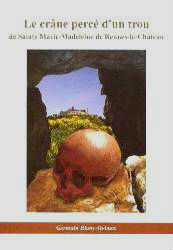
David Rossoni, L’Histoire Rêvée de Rennes-le-Château: Eclairages sur un Récit Collectif Contemporain (Books on Demand Editions) 
8 April: Letter by DRAC to Albert Fagioli concerning his request to excavate the church of St Mary Magdalene May: Restoration work on the Exterior and Interior of the church of St Mary Magdalene completed
André Galaup, Rennes-le-Château: En quête de vérité (Messages Imprimerie, 2012) 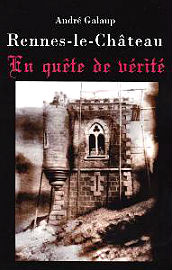
13 March: Pope Francis 14 April: La Dépêche du Midi, The Dreams of Rennes-le-Château. The article quotes the Mayor as saying: “We're going to do some researches within the so-called “local built-heritage” (petit patrimoine) framework... if we make some interesting discoveries then, perhaps, under the auspices of DRAC, we will finally excavate at Rennes-le-Château. But they will be proper, official excavations!” Belgian architect Paul Saussez, member of a community of believers in the “treasure”, was also appointed as the official representative of the Rennes-le-Château Municipal Council on 26 August 2011 in an attempt to persuade DRAC, in conjunction with Frédéric Loppe of the “Amicale Laïque de Carcassonne” and the archaeologist Marie-Elise Gardel, into making official excavations into the burial crypt beneath the village church (Paul Saussez, “Point sur le dossier des fouilles concernant l'église de Rennes-le-Château”, pages 73-76, Actes du Colloque d'Études et de Recherches sur Rennes-le-Château 2012, Editions de l'Oeil du Sphinx, 2013). However, the anticipated updates between Paul Saussez and DRAC never materialised and the archaeological excavations of Rennes-le-Château were never undertaken. 1 August: Using a dowsing-rod, Albert Fagioli claimed to have discovered underground cavities and a “cache” beneath the church of Rennes-le-Château. Philippe Hui stated that in the absence of any official excavating by DRAC, a fibre-optic cable would be inserted into the ground (L'Indépendant, 2 August 2013). The same kind of treasure hysteria that dominated the village of Rennes-le-Château during the 1950s with Noël Corbu (1912-1968) and Robert Charroux (1909-1978) continues on into the 21st century – except that most of the local inhabitants have been forced to leave the village because of unwanted and fallacious-based mass tourism August: Christian Doumergue, President of the Association Terre de Rhedae, holds a controversial exhibition devoted to Pierre Plantard in Rennes-le-Château to coincide with the publication of his book, that drew hostile reactions from other believers in the alleged mystery (published in L'Indépendant, “Une exposition très controversée à Rennes-le-Château”, 9 August, 2013; in La Dépêche du Midi, “Rennes-le-Château. La réhabilitation d'un personnage controversé crée la polémique”, 27 December 2013; and again in La Dépêche du Midi, “Rennes-le-Château: Le passé de Plantard fait polémique”, 9 January 2014) 6 September: Creation of the magazine “Rennes-le-Château Le Mag”, a collaboration of local associations – ARTBS, APARC, Association Rennes-le-Château.doc, l'Oeil du Sphinx, Legende d'Oc and Pégase – in a crucial attempt to produce a legitimate presentation of the flashy “mystery” that they all treat seriously. The inaugural issue is dated June 2014
22 May: The grandson of Dr André Malacan returned the skull to Rennes-le-Chäteau that was discovered in the church in 1956 – following legal wranglings since April 2013 – the story was covered in L'Indépendant (31 May 2010) and in La Dépêche du Midi (19 May 2010, 4 June 2010, 30 June 2014). The aim is to have it Carbon-14 dated
6 June: Commemorative plaque marking the centenary of Henri Boudet's death was placed in the church porch in Rennes-les-Bains. It was unveiled by the village mayor André Authier in the presence of the deputy mayor Marcelle Delmas. 6 July: Article in La Dépêche du Midi by Jean-Luc Letitre entitled “Light is Shed on the Mystery of the Pierced Skull” stated that tests showed the skull found by André Malacan in 1956 belonged to a male about 50 years of age, with the external loss of bone at the top of the skull showing he had died from a powerful blow of a halberd. Carbon-14 tests gave a date for the pierced skull of between 1281 and 1396. The skull became a display in the “Le Musée Domaine de l'Abbé Saunière” by 7 August 2016. 
12 March: The newly refurbished and renovated “Saunière Museum” re-opened in Rennes-le-Château (now called “Le Musée Domaine de l'Abbé Saunière”) 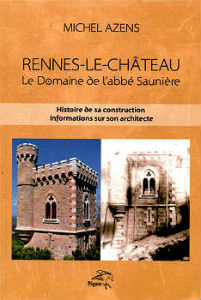
July: Michel Azens, Rennes-le-Château: Le Domaine de l’abbé Saunière. Histoire de sa construction. Informations sur son architecture (Éditions Pégase, 2016). 18 October: The Rennes-le-Château bookshop, “Atelier Empreinte”, first opened in March 1986 by Sonia Moreau and Alain Féral (1942-2013), auctioned. 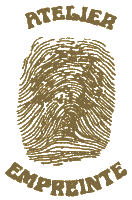
22 January: Centenary of Bérenger Saunière’s death 3 March: Xavi Bonet, Oscar Fabrega, Enric Sabarich, Compendium Rhedae, 100 Años de Rennes-le-Château (prologue by Mariano F. Urresti, Editorial Círculo Rojo) 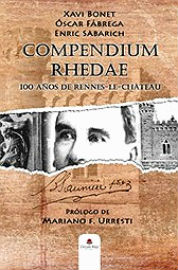
7 April: Kris Darquis premiers a film in Rennes-le-Château about Pilate's apocryphal wife Claudia Procula, marking a Rennes-le-Château tourist attraction linked to Christian Doumergue's two books, La Tombe Perdue (2008) and Le Secret Dévoilé (2013), linking the “village mystery” to Jesus Christ and Mary Magdalene (easily debunkable because the so-called “Apocryphal letter of Claudia Procula” is a story called “La Mort du Juste” by Éveline Ribbecourt first published in 1846).
23 April: Statue of the Devil in the church of Rennes-le-Château decapitated and vandalised. The story was reported in La Dépêche (24 and 29 April), L'Indépendant (24 and 25 April) and Midi-Libre (24 April, reprinted on Fdesouche). The 30 year-old female who committed the vandalism (under the pretext of it serving as publicity for a book she had written), was given a two-year suspended prison sentence, placed on probation for 24 months, barred from entering the commune of Rennes-le-Château and fined 17,718 Euros, to which she protested: “I refuse to pay even a single symbolic Euro!” (La Dépêche, 24 November; L'Indépendant, 24 November). The statue of the devil had previously been decapitated and vandalised on 21 April 1996. 12 August: Donation of 1,000 Euros by the Prieuré de Sion – Ordre de la Rose Croix Véritas toward the repair of the vandalism committed in the church of Rennes-le-Château. Gino Sandri (Grand Patriarch) and Marco Rigamonti (General Secretary & Grand Master) preserve the lineage of Pierre Plantard de Saint-Clair. The order (founded in 1099) is a conflation of Hermetic, Gnostic and Rosicrucian influences, dating back to ancient Babylon and Egypt – involving the revelation of the Holy Grail which is the hereditary DNA of Jesus Christ and Mary Magdalene. Bérenger Saunière codified this information into his church (Par ce geste, le Prieuré de Sion «embrasse Rennes-le-Château» L'Indépendant, 6 November, ladepeche, 8 November 2017). 22 August: Documentary-maker Philippe Brunel started the Projet Kisskissbankbank, (“L’abbé, le diable et les chercheurs”, Little Big Films) hoping to attract enough subscribers to plan about 6-7 documentary episodes about the subject matter of Rennes-le-Château (reported in La Dépêche du Midi on 2 September). An online appeal for donations quickly attracted the sum of over 5.000 Euros from 40 people. The unrelenting and voracious appetite about the mystery and treasure of Rennes-le-Château continues unabated in 2017 – despite the existence of evidence showing that Bérenger Saunière amassed over 200,000 francs between 1896-1915 from trafficking in masses – was summoned to a trial in 1910-1911 to explain his actions – was stripped of his priesthood – and planned to move to Lourdes, but was unable to do so because he could not sell his property (through the Banque Petitjean) to finance his plan. 
September: Le journal de l’abbé Saunière 1901 à 1905: commenté par Patrick Mensior (Les Éditions de L’Oeil du Sphinx; Les Éditions Rennes-le-Château.doc, 2017)
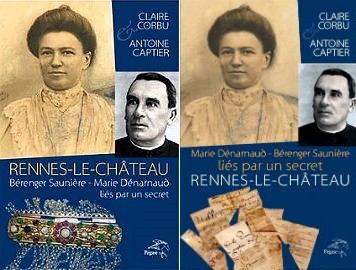 7 July: Claire Corbu & Antoine Captier, Bérenger Saunière – Marie Dénarnaud liés par un secret. RENNES-LE-CHÂTEAU (written in the form of a novel, preface and supplément “Le secret de l’abbbé Saunière: au milieu du tunnel” by Michel Vallet, includes Limited Edition of 250 numbered copies, Éditions Pégase) 25 July: Philippe Brunel shows his first “L'abbé, le diable et les chercheurs” documentary (Little Big Films) in Rennes-les-Bains. First part of a trilogy representing the formulated propaganda of the believers: “There is not one treasure, but several treasures: being part of a complex and enigmatic mystery”

January: Bernardo Sanchez da Motta, O Priorado de Sião e a Ordem do Templo (independently published, 2019)
22 March: Completion of the restoration of the statue of the Devil in the church of Rennes-le-Château (now protected by glass), that was decapitated and vandalised on 23 April 2017
23 May: Alexandre Painco re-elected Mayor of Rennes-le-Château
21 May: Inauguration of the Abbé Antoine Gélis Museum in Coustaussa (Tourist Attraction for the Mystery Buffs). 
David Rossoni  |
